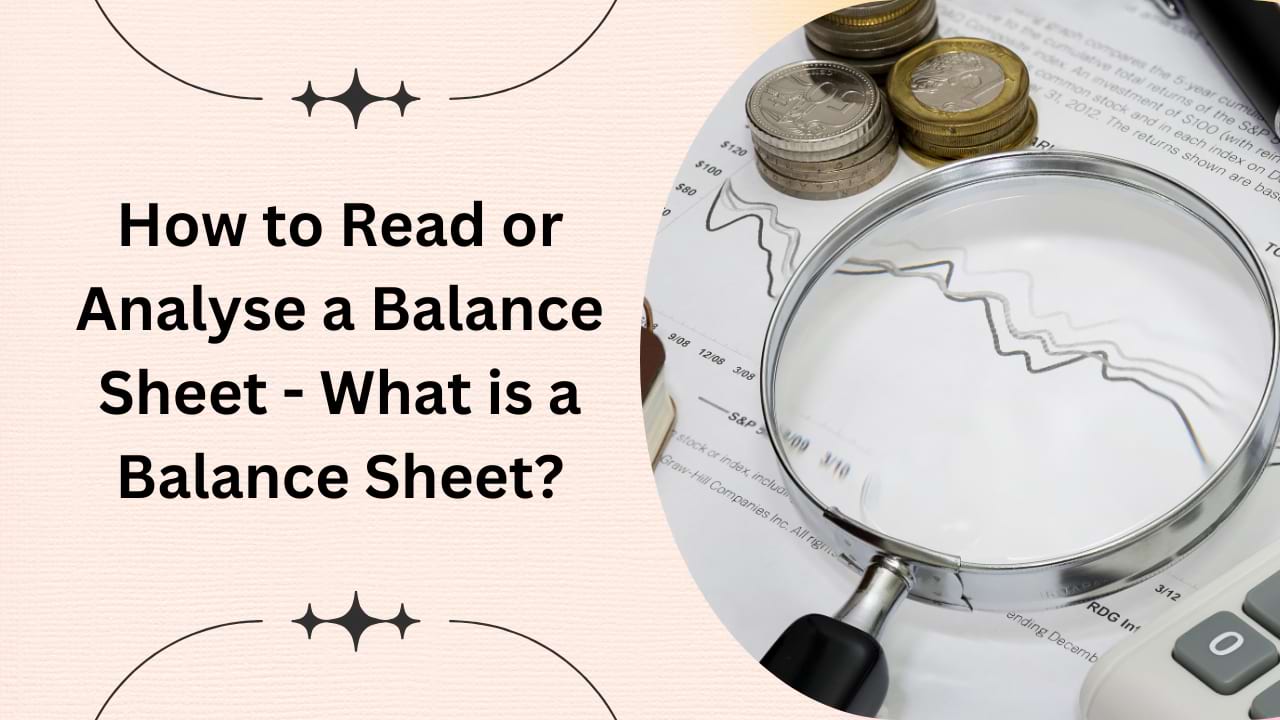How to Read or Analyse a Balance Sheet, this article is about analyzing the financials of any company which may be a private limited company or a public company. Reading the financials is the main and basic thing that every finance manager or Chartered Accountant should know about. If you do not know the same, then no Company would be keeping you as an employee for a long time. This is the very basic thing every Finance person should know. I have explained this in detail in this article. Must Check GST Number Search by Name.
Quick Links
What is a Balance Sheet?
The Balance Sheet is the financial statement that shows what the company is “OWNING” and what the company is “OWING”. In short, the balance sheet gives the company’s financial strength. Any expert reading the balance sheet would come to know about the company’s future and the past. The word Balance Sheet has evolved because it talks about the balancing between the Assets and the Liabilities. Assets and Liabilities are the two parts of the balance sheet.
Assets are the things the company or particular firm or individual owns, on the other hand, Liabilities are the things that the company firm, or individual is liable to pay to someone. The next part of the balance sheet is Equity, which is also known as the Net worth of the company. It indicates the company’s total strength and what returns the company is getting. Now I would start discussing each of the interior parts of the balance sheet.
1. Shareholders Funds –
This indicates the sources through which the company is financed. It mainly includes Share capital, Reserve surplus, etc. Share capital would include two things – Equity Share capital and Preference Share Capital.
2. Non-current liabilities
These are the liabilities that are to be paid off after the end of the reporting date. It mainly includes Long term Borrowings, Deferred tax liabilities, Long term provisions, etc.
3. Long term borrowings –
These are the loans that have been taken from the bank or the financial institutions that are due not in the current year but in the coming years. These loans can be of two types- secured or unsecured. Secured is the one that is secured against some asset. Unsecured is the one which is not secured by any asset.
4. Deferred Tax Liability
This is caused because of the difference in the taxable profit and the accounting profit.
5. Long term provisions
These are the provisions that are not made only for the current year but for the coming years too. Examples of Long term provisions are Employee provident fund, gratuity fund, etc.
6. Current Liabilities
These are the liabilities that are due within 1 year from the date of reporting. This mainly includes Trade payables, short-term provisions, short-term borrowings, etc.
7. Non-Current Assets –
Non-current assets are the assets that are held for more than 1 year. Examples of Non-current assets are – Fixed Assets, Non-Current Investments, Long term Loans, and Advances, etc. Fixed Assets includes Tangible Assets and Intangible Assets. Acid Test Ratio or Quick Ratio
8. Current Assets:
These assets are the ones that are used in the normal routine day-to-day functioning of the company. They are held for the doing the business. They are acquired to be retained for up to 12 months and not more than that. Examples are Trade receivables, Inventory, Current Investments, Cash and Cash Equivalents, etc.

